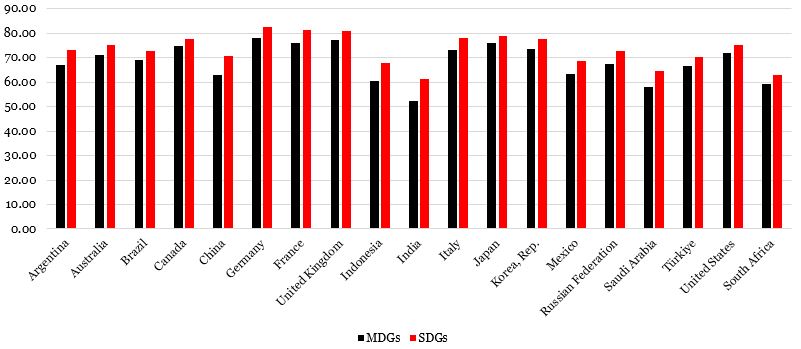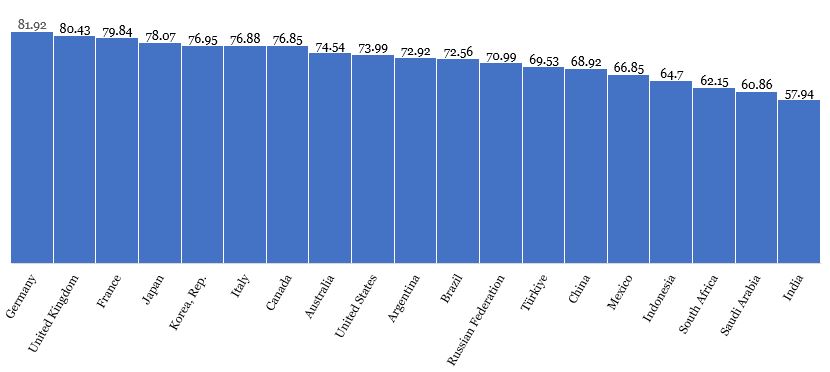
In 2015, the United Nations adopted the Sustainable Development Goals (SDGs), a set of 17 global objectives to address a wide range of socio-economic and environmental challenges by 2030. Five years earlier, the Millennium Development Goals (MDGs) had paved the way for these ambitious targets, marking a significant step in international development efforts. As we reach the halfway mark to 2030, the Sustainable Development Report (SDR) 2023 provides a comprehensive analysis of the progress made in realizing the SDGs and, in a groundbreaking revelation, highlights a remarkable quantum difference between the MDGs and SDGs’ realization.
The Sustainable Development Report 2023
The Sustainable Development Report (SDR) is an annual publication that evaluates the progress made by 193 UN Member States in achieving the SDGs since their adoption in 2015. It provides an essential tool for assessing the world’s collective efforts in addressing some of the most pressing challenges of our time, such as poverty, inequality, environmental sustainability, and access to education and healthcare. Published on the eve of the 2023 Paris Summit for a New Global Financial Pact, this year’s report places particular emphasis on the urgent need to scale up development finance and reform the global financial architecture to support the SDGs.
Register for Tekedia Mini-MBA edition 19 (Feb 9 – May 2, 2026): big discounts for early bird.
Tekedia AI in Business Masterclass opens registrations.
Join Tekedia Capital Syndicate and co-invest in great global startups.
Register for Tekedia AI Lab: From Technical Design to Deployment (next edition begins Jan 24 2026).
Selected Countries: A Global Perspective
Using the Sustainable Development Report 2023, we examine the progress of 19 countries: Argentina, Australia, Brazil, Canada, China, Germany, France, United Kingdom, Indonesia, India, Italy, Japan, Korea, Mexico, Russian Federation, Saudi Arabia, Türkiye, United States, and South Africa. These countries, while not representing the entire global community, offer a representative sample of diverse regions, economies, and developmental challenges. The analysis of these countries provides valuable insights into the global landscape of SDG realization.
Quantum Correlation: MDGs vs. SDGs
One of the most intriguing findings of the Sustainable Development Report 2023 is the substantial correlation observed between the realization of the MDGs from 2001 to 2007 and the progress made in the SDGs from 2015 to 2022. The correlation of average scores between these two periods is an astonishing 99.6%, indicating an almost perfect alignment in progress. This revelation highlights the enduring commitment of the international community to addressing global challenges over two distinct developmental agendas.
Furthermore, analysing the average score difference in the first eight years of MDGs and SDGs realization revealed a significant positive correlation. An impressive 97.9% correlation was found between the two global development agendas. This underscores the remarkable consistency in the achievements of the MDGs and the SDGs, despite the different timeframes and evolving global dynamics.
Exhibit 1: The difference in MDGs 2000 to 2007 and SDGs 2015 to 2022 performance

Implications and Key Takeaways
The exceptional correlation between the MDGs and SDGs realization brings forth critical insights into the global development landscape. It suggests that the international community, including the 19 selected countries, has shown a sustained commitment to tackling poverty, inequality, environmental sustainability, and other global challenges. This remarkable alignment in progress underlines the consistency of purpose and effort over the years.
Global Unity. The correlation between the MDGs and SDGs showcases the importance of international cooperation. While the world has witnessed significant shifts in geopolitics, economics, and technology, the commitment to global development goals has remained steadfast. This unity of purpose has the potential to drive the world closer to achieving the SDGs by 2030.
Call for Increased Financing. The Sustainable Development Report 2023 emphasizes the need to scale up development finance and reform the global financial architecture to support the SDGs. As we move forward, it is imperative that countries and international organizations enhance their efforts to mobilize resources, provide aid, and ensure equitable access to development finance, especially in the face of ongoing challenges such as the COVID-19 pandemic.
The Sustainable Development Report 2023 provides a remarkable insight into the ongoing progress in achieving the SDGs and the enduring commitment of the international community to global development goals. The quantum difference observed in the correlation between the MDGs and SDGs realization underscores the consistency of purpose and effort over time of the selected countries. As we strive to achieve the ambitious SDGs by 2030, this alignment of progress serves as a beacon of hope and a testament to the power of global unity in addressing some of the world’s most pressing challenges.
Exhibit 2: Pareto performance of SDGs 2015-2022




